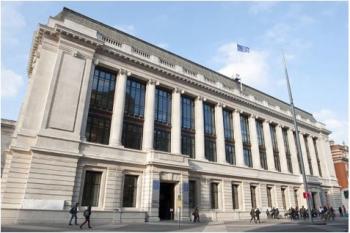Science Museum
The Museum as an institution has been in existence since the middle of the 19th Century. It has its origins in the Great Exhibition of 1851, held in Hyde Park under the huge glass building known as the Crystal Palace. The exhibition produced a huge surplus of funds, and its patron, Prince Albert, suggested it should be used to build other educational establishments on available land nearby. The first of these, the South Kensington Museum, opened in 1857 on land which is now part of the Victoria & Albert Museum. The building initially houses a variety of industrial objects and in 1862 Stephenson's 'Rocket' was put on display. Today, the Rocket is displayed at the Locomotion Museum in Shildon, County Durham, having previously spent a couple of years at the National Railway Museum in York.
By 1893, the Science Collections continued to be administered as part of the South Kensington Museum. The accommodation was by now quite inadequate and the scientific community argued strongly for a new and appropriate building which was becoming a nationally significant museum in its own right. It was, however, the Art Collections which were looked after first. In 1899, the ageing Queen Victoria laid the foundation stone of a new range of buildings, and she directed that in future the Museum should be renamed The Victoria and Albert Museum in 1909, when the new buildings were opened, the title was confined to the art collections only. The Science and Engineering Collections were finally separated administratively, and the name Science Museum]/no-glossary], used informally since 1885, was officially adopted. The museum aims to stimulate the interest and curiosity of children in science and technology using simple and attractive displays and a large number of working models.
Today, the museum’s art collections comprise over 15,000 objects, ranging from the 1500's to now. It includes paintings, prints, drawings, sculptures and kinetic and digital works.
Get Unlimited Access from just £5


